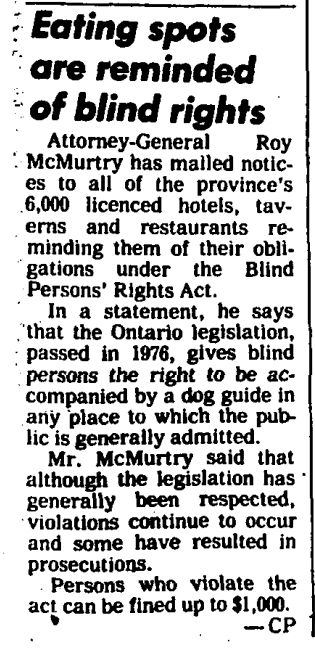
Ottawa’s new light rail system is slated to open this spring, but some people with visual impairments feel the City is not taking their mobility seriously. In their third meeting with the City since December 2015, the Ottawa Alliance for Equality of Blind Canadians, expressed their concerns with the lack of digital navigation in the light rail system.
Alliance president, Peter Field believes digital navigation would allow riders to use a GPS-like function on their phones to travel independently. According to Field, the City has not committed to a digital navigation system. They did, however, say train operators could assist people who struggle to find their way on the train. “This is not universal design – where an environment is created to fit the needs of everyone,” said Field.
The light rail system will incorporate an assessable fare box and audible gates tones. While this is a good start, Field feels the City is disconnected from the needs of visually impaired people. “There is an accessible procurement policy in Ottawa which means they don’t procure anything until accessibility is taken into account,” said Field. “But I don’t know what was taken into account. They didn’t talk to the users. They decided what was assessable.”
Field has been fighting for accessibility rights for over 40 years. His experience was first documented in a 1979 Globe and Mail article titled, “He was Blind and they were Deaf.”

The article states:
“Peter Field, blind since 1977 was ejected from a Toronto restaurant the other night because “they wouldn’t let the dog in. I tried to convince them that the dog wouldn’t do any harm, but they wouldn’t listen.”
Peter, 17 turned to the police for help. It was the logical thing to do, and logically, he should have received a cordial reception, and the promise of assistance. He received neither.
The person answering the telephone at Division 52, told him there was nothing the police could do. After a quick word with The Canadian National Institute for the Blind, which assured him he had the full support of the law, Peter called Division 52 again, and said he “wanted to tell the Inspector to inform his men that there is a law.””
“I remember that clearly,” said Field. “When I started to lose my vision, I went straight to a guide dog. There wasn’t a time when I used a cane, so the dog really was my independence.”
Field remembers being asked to leave the hotel restaurant in front of his friends. “The idea of being refused felt very personal – like someone was doing something to me,” he said.
A grade eleven law teacher showed him The Blind Persons’ Rights Act, and encouraged Field to report this matter to the police. This Act which was passed in 1976, guaranteed people with visual impairments the right to be accompanied by a guide dog at all times.

Unfortunately, the police were unaware of the Act. Stories like Field’s were so common that in 1978 Attorney-General Roy McMurtry mailed over 6,000 notices to restaurants, hotels and bars reminding them of their duties to uphold the law – and of the $1,000 fine.

“Fast-forward to today, and not a lot has changed,” said Field. Just three years ago Field was denied service from a taxi driver, because of his guide dog. When Field reported the incident the police said there was nothing they could do. “So much time has passed and the police still don’t even know how to enforce this Act,” Field said.
“This happened when I was 17, and I am now coming up to 57,” he said.
In the next 40 years, Field envisions digital navigation as the primary way people with visual impairments navigate the world. He thinks Ottawa has missed a great opportunity to implement digital navigation in the light rail system — forcing people with visual impairments to remain patient for change yet again.
• This historical documentation is The Blind Persons’ Rights Act which was introduced in Ontario in 1976.
• I obtained this document through the McOdrum Library digital archive.
• This document helped me observe the original language surrounding the Act.
• This is a Globe and Mail article written on February 26, 1979, titled, “He was Blind and they were Deaf.”
• I obtained the article on the historical Globe and Mail digital archive through the Ottawa Public Library.
• This article was written three years after The Blind Persons’ Rights Act was passed, so it helped me understand how Act was applied in real life.
